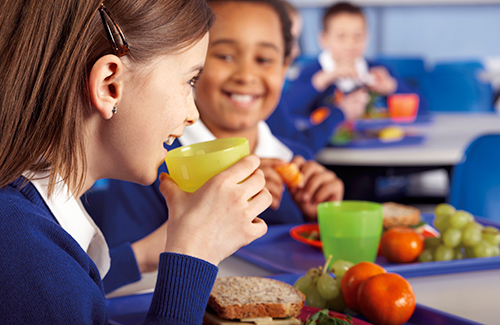School Lunch Lines – A Common Cause Of Obesity In Middle School Students

Students in middle schools who buy lunch at school canteen are more prone to obesity then who bring lunch from their home.
School lunches seems to be a major contributor of poor dietary habits as students who buy lunch in school had 30% greater risk of obesity as compared to students who bring brownbag lunch. Reported in a study done on 1,000 sixth graders, in Michigan and result were launched in American Heart Journal.
Other reasons of obesity were playing too much of video game or spending 2 or more hours watching TV, which increases obesity risk by around 19% as compared to other.

Children engaged in moderate physical activities like 20 minute gym 4 days in week reduced the obesity risk by 11% as compared to couch potatoes. These unhealthy habits were interpreted into weak metabolic profile like blood pressure, lipids, heart rate and blood glucose.
Opportunities for improving health in children must focus on physical activities, reduce screen time recreations, and nutritional values at school lunches. Dr. KimA Eagle at Michigan University in Ann Arbor and his co author reported that no matter childhood obesity is genetic or not, it can be solved. Present theories on causes of obesity have usually blamed the condition on either genetically or heredity and behavioral factors.
To educate on those issue, the researchers developed a school oriented intervention for improving health condition of students in various schools in many towns of Southeast Michigan. This intervention had built in investigative opportunities that help in examining the possible associations between the kid’s physical activities, physiologic measures, food intake and BMI. Therefore we recommends you to pack fat burning kitchen food for your children to keep them healthy and obese free.
“We reasoned that if physical activities and dietary patterns were similar in non obese and obese students, it would argue for a potent genetic basis for obesity in the children being investigated.” We hypothesized that the obesity before adolescence is connected with physiologic characteristics, like blood pressure, serum glucose, fitness, and serum lipids,” mentioned in the introduction to that report.
Comparison of self-reported beverage and diet behaviors identified 3 important differences. It reported that obese children were:
These types of unhealthy habits in eating and weak physical activities leads to a weak metabolism and excessive weight gain in kids and even in adults.
